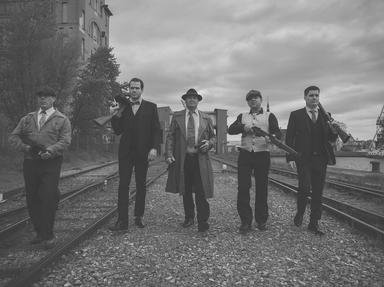Quiz Answer Key and Fun Facts
1. Powell and Pressburger first collaborated in 1939 on which World War I espionage movie, starring Conrad Veidt and Valerie Hobson?
2. Which 1941 Powell and Pressburger movie, tells the story of a German U-boat crew trying to make their way across Canada to the USA, which was then still neutral in World War II?
3. In "The Life and Death of Colonel Blimp" what was the reason why the Colonel wore a moustache?
4. What is the great mystery that the characters Peter, Alison and Bob wish to solve in "A Canterbury Tale"?
5. In the 1946 film "A Matter of Life and Death" what smell signifies to Peter Carter that the heavenly conductor is about to pay him a visit?
6. "The Red Shoes" is a 1948 film set in the world of ballet. The plot is loosely based on a fairy tale about a young girl whose red shoes compel her to dance continuously until she dies. Who wrote the original fairy tale?
7. Which Powell and Pressburger movie was an updated version of Strauss's "Die Fleidermaus", set in occupied, post-war Vienna?
8. Which future singer who had number one hits in the 1960s, on both sides of the Atlantic, appeared as a 13-year-old in the 1945 Powell and Pressburger film 'I Know Where I'm Going!'?
9. For which Powell and Pressburger film did renowned cinematographer, Jack Cardiff, win the Best Cinematography Oscar?
10. Throughout this quiz I have used the original UK titles of the films of Powell and Pressburger. However, many of these films had alternative titles when released in the US and elsewhere. Which of these is not the US release name of one of their original films?
Source: Author
Snowman
This quiz was reviewed by FunTrivia editor
skunkee before going online.
Any errors found in FunTrivia content are routinely corrected through our feedback system.

